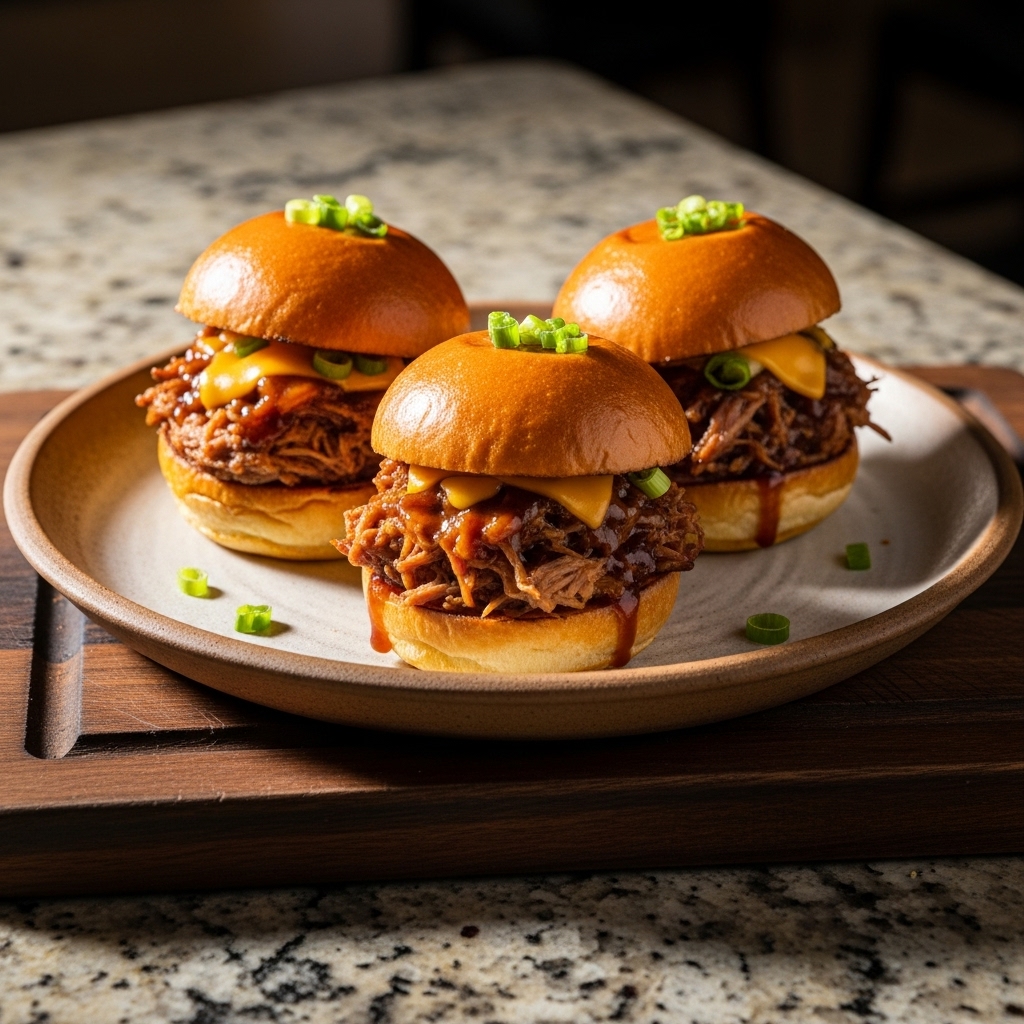
Smoky Mountain BBQ Sliders with Hickory-Maple Glaze
Find this mouthwatering copycat recipe for Smoky Mountain BBQ Sliders with Hickory-Maple Glaze and indulge in the perfect fusion of tender pork, tangy coleslaw, and smoky flavors.
Allergens
Wheat (in buns), Soy (potential in BBQ sauce or store-bought seasoning)
Ingredients
- 2 lbs boneless pork shoulder
- 1 cup hickory wood chips, soaked in water for at least 30 minutes
- 2 tbsp paprika
- 1 tbsp garlic powder
- 1 tbsp onion powder
- 1 tsp ground black pepper
- 1/2 tsp cayenne pepper (optional)
- Salt, to taste
- 6 slider buns
- Coleslaw, for serving
Instructions
- Prepare the pork shoulder by trimming any excess fat and cutting it into 3 4 pieces. Season with paprika, garlic powder, onion powder, ground black pepper, and cayenne pepper (if using).
- Set up your grill for indirect cooking, placing a drip pan in the center and arranging the wood chips around the coals or heat source. Place the pork shoulder on the grate over the drip pan.
- Close the lid and smoke cook the pork at 250°F (121°C) for 4 6 hours, or until it reaches an internal temperature of 190 195°F (88 91°C).
- Remove the pork from the grill and let it rest for about 15 minutes. Then, shred the meat using two forks and mix in your preferred BBQ sauce or a homemade one made of ketchup, vinegar, sugar, spices, and molasses.
- Heat the buns on the grill until slightly toasted. Assemble the sliders by placing a generous portion of pulled pork onto each bun, topping with coleslaw, and drizzling with hickory maple glaze.
- Serve immediately and enjoy the sensational combination of smoky BBQ flavors, tender pork, and crisp coleslaw!
Chef’s Insight
The key to tender, smoky pulled pork is low and slow cooking over indirect heat.
Notes
Adjust the level of spiciness to your preference by altering the amount of cayenne pepper or by using a hotter BBQ sauce.
